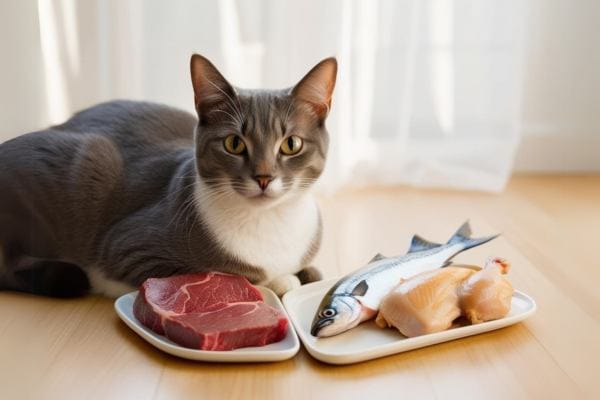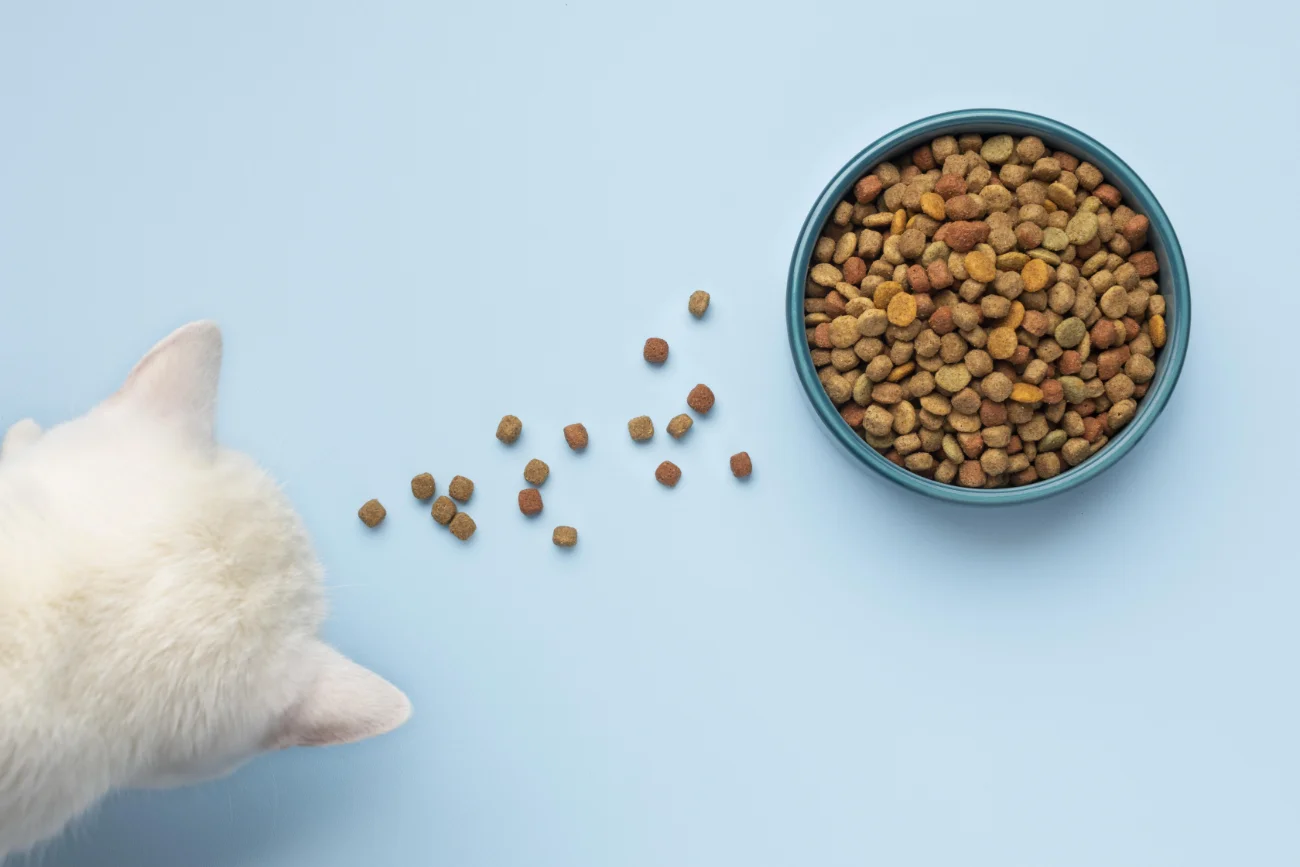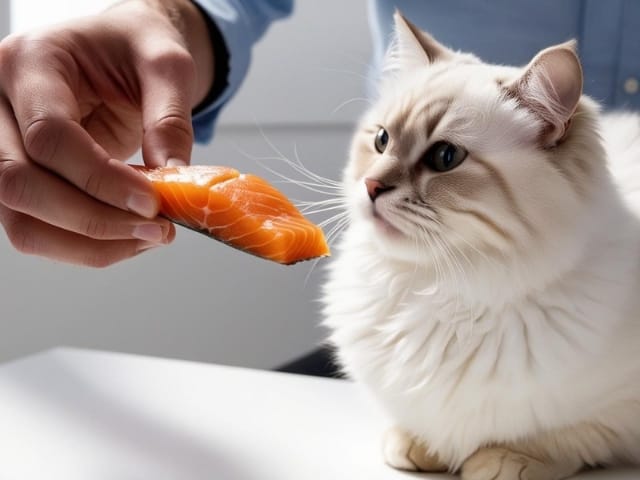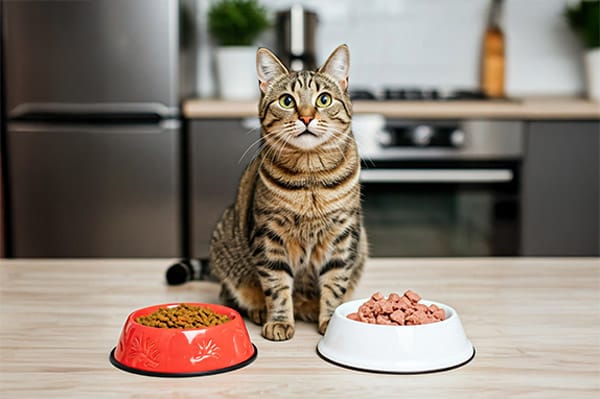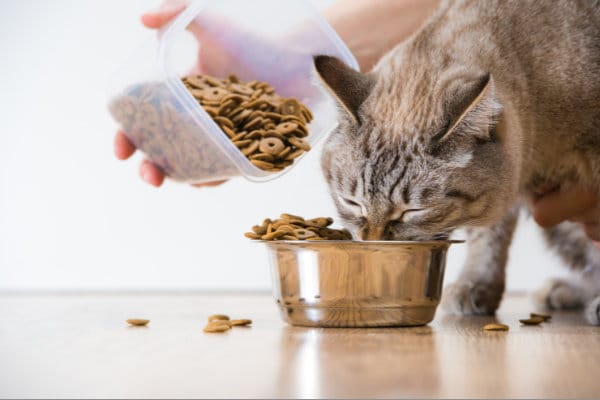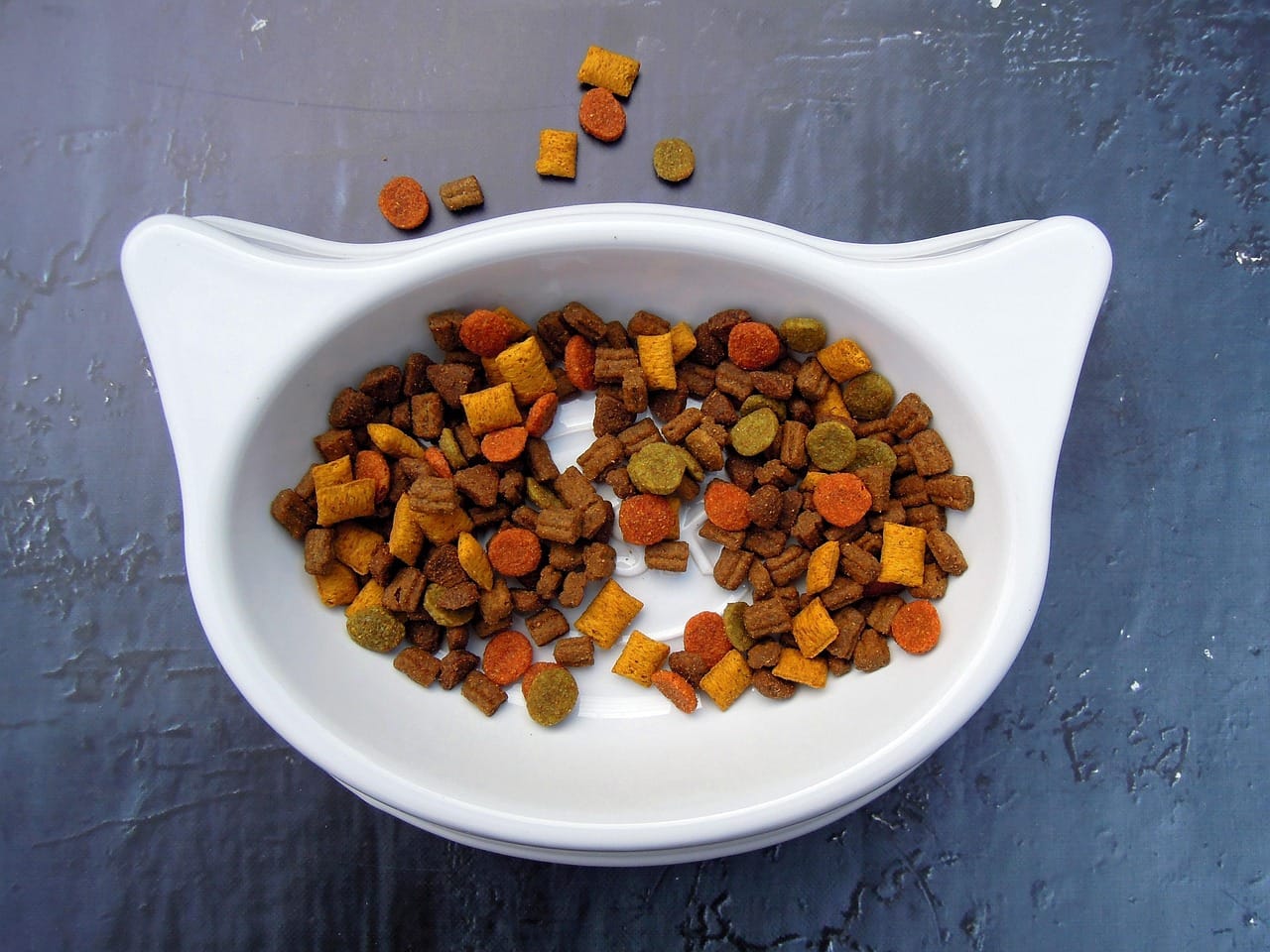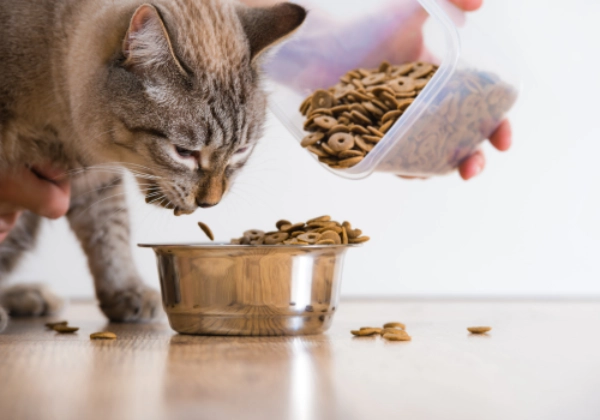The cat nutrition guide reveals that the average house cat today lives twice as long as its counterparts did 50 years ago, and much of this improvement can be attributed to better nutrition! Whether you’re a new cat parent or seeking to optimize your furry friend’s diet, understanding cat nutrition is vital for their health and longevity. In this comprehensive guide, we’ll cover everything from basic nutritional needs to specialized diets, empowering you to make informed decisions about your cat’s food choices.
Understanding Basic Cat Nutrition Guide
Let’s dive into what your furry friend really needs to stay healthy and happy – trust me, after years of working with cats, I’ve learned it’s not as complicated as some make it out to be!
First up, let’s talk about protein – it’s absolutely non-negotiable for cats. Your little furry friend needs high-quality animal-based proteins, and here’s the kicker: they can’t thrive on plant proteins alone. I’ve seen way too many well-meaning pet parents make this mistake. Cats need specific amino acids like taurine, which they can only get from animal sources.
Speaking of taurine (and boy, is this important!), it’s crucial for your cat’s heart health, vision, and reproductive system. Without enough taurine, cats can develop serious health issues. Make sure your cat’s food lists taurine as an ingredient!

Now, about those daily calories – it’s not one-size-fits-all, folks. A lazy indoor cat needs way less food than your neighborhood explorer. Here’s a quick breakdown:
• Adult indoor cats: 20-35 calories per pound
• Active outdoor cats: 35-40 calories per pound
• Kittens and nursing mothers: Up to 90 calories per pound
Pro tip: Keep an eye on your cat’s body condition rather than just following cats feeding guidelines on the package. Every cat’s metabolism is different, and I’ve learned this the hard way!
When it comes to protein requirements, you should aim for foods where real meat is the first ingredient. Adult cats typically need 40-45% protein in their diet, while kittens need even more. You might be surprised that wet food often provides better nutrition than dry food, plus it helps with hydration (though my cats would probably live on kibble if I let them!).
Remember, these nutritional needs can change as your cat ages or if they develop health issues. Always check with your vet if you’re unsure – they’re the real MVPs when it comes to tailoring your cat’s diet perfectly.
Wet Food vs. Dry Food: Making the Right Choice
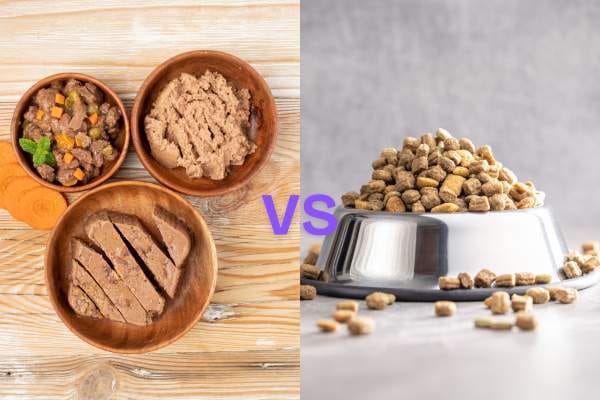
Let’s tackle the eternal cat food debate that’s had me scratching my head for years! After working with countless cat parents, I’ve learned that choosing between wet and dry food isn’t as straightforward as it might seem.
Wet Food
First up, let’s talk about wet food – it’s basically the superhero of hydration. Your furry friend needs plenty of moisture, and wet food delivers it in spades with about 75-85% water content. Trust me, this is a game-changer, especially if your kitty’s not big on hitting the water bowl.
Dry Food
On the other hand, dry food has its own set of perks. It’s super convenient, more budget-friendly, and they are great for dental health since the crunchy texture helps reduce tartar buildup. Plus, you can leave it out longer without worrying about spoilage, which is pretty sweet if you’re running a busy household.
But here’s the thing about combining both: it’s actually a brilliant strategy that gives you the best of both worlds. I usually recommend feeding wet food in the morning and evening, with a small portion of dry food available during the day. This approach nails the protein requirements for cats while keeping them properly hydrated.
Storage Wise
Wet food needs refrigeration after opening (don’t leave it out for more than 4 hours, folks!), while dry food just needs a cool, dry place in an airtight container. Quick tip: those fancy pet food containers are worth every penny – they keep the kibble fresh way longer than the original bag.
Cost Wise
Cost can be a bit of a pain point with wet food, not gonna lie. It’s typically pricier than dry food, but think of it as an investment in your cat’s health, especially their kidney and urinary health. If your budget is tight, even using wet food as a supplement to mainly dry food can make a significant difference.
The bottom line? There’s no one-size-fits-all answer. Your cat’s age, health conditions, and personal preferences should guide your choice. And remember, whatever you choose, make sure it meets feline nutrition basics and contains essential nutrients like taurine. When in doubt, your vet’s always got your back!
Life-Stage Appropriate Feeding Guidelines
You know what’s wild? Every stage of your cat’s life needs a different nutritional approach – trust me, I’ve learned this after years of working with feline nutrition. Let’s break this down into something super manageable.
Kitten Feeding Guideline
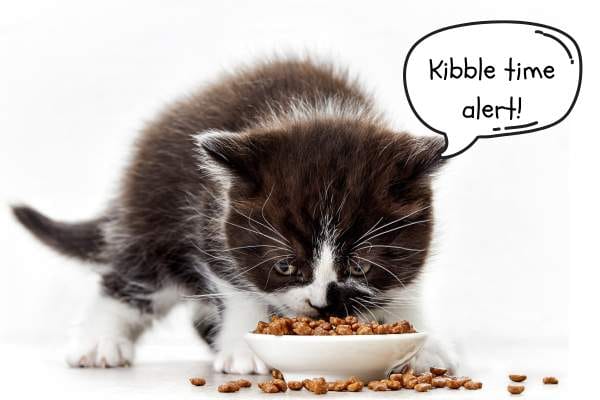
For those tiny furballs (kittens), you’re looking at high-protein, high-calorie diets that pack a serious punch. Your kitten needs about 3-4 small meals daily until they’re six months old – and believe me, they’ll let you know when they’re hungry! Make sure their food is specifically labeled for kittens, as it’s got extra taurine and essential fatty acids for proper development.
Adult Cats Feeding Guideline

They are a bit more straightforward (thank goodness). Adult cats typically need two meals a day of quality protein-rich food that matches their activity level. I’ve found that mixing wet and dry food works like a charm – the wet food helps with hydration while the dry food keeps their teeth clean. Pro tip: if your cat’s getting a bit chunky, don’t just reduce portions; switch to a lean protein formula instead.
Senior Cats Feeding Guideline
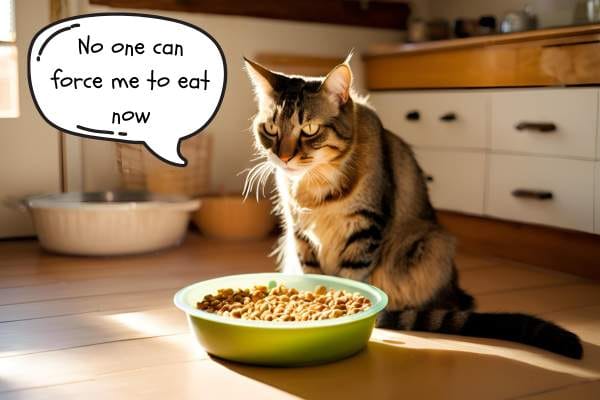
Now, senior cats (around 7+ years) are where things get interesting. Their metabolism slows down, but their protein needs actually increase – weird, right? You’ll want to look for senior-specific formulas that are easier to digest but still high in protein. I usually recommend breaking their daily portions into smaller, more frequent meals since their appetites can be finicky (like my old Mimo).
Pregnant and Nursing Cats Feeding Guideline
These mama cats need up to three times their normal calorie intake, especially during nursing. Start increasing their food intake gradually during pregnancy, and make sure they have constant access to fresh food while nursing those hungry kittens.
Quick heads up
Whenever you’re switching foods between life stages, do it gradually over 7-10 days. Trust me on this one, you don’t want to deal with an upset kitty tummy. And always keep fresh water available, regardless of your cat’s age or stage.
Remember, these are general guidelines – your cat might need something different based on their health, lifestyle, or just plain old personal preference. When in doubt, your vet’s always got your back for specific recommendations.
Common Nutritional Problems and Solutions
Ever notice your cat’s starting to act a bit off? Maybe they’re over-grooming or the litter box isn’t looking the way it should. These can be signs of nutritional deficiencies, and trust me, no one wants a cranky kitty. Lethargy, dull fur, or even a sudden change in appetite can indicate that your feline isn’t getting the right balance of nutrients. If you notice these signs, it’s wise to check the cat nutrition labels on their food
Common Nutritional Problems
Obesity

Now, let’s chat about cat obesity, shall we? It’s like that battle of the bulge but for our fur babies. Whether you’ve got a chubby little munchkin lounging around or you’re trying to help your cat shed a few pounds, being aware of portion control is crucial. A good practice? I suggest sticking to your cat feeding schedule. Consistency goes a long way. Plus, incorporating some fun playtime can make a big difference in cat weight management. You’ll see! A bit of exercise can help keep their weight in check.
Food Allergies
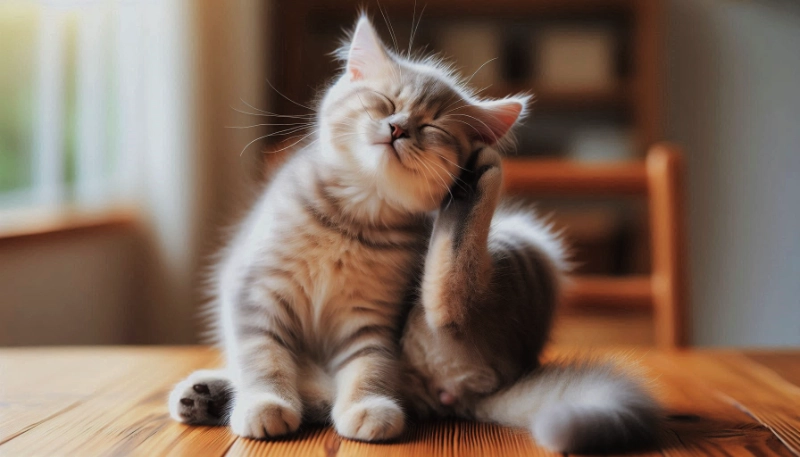
Food allergies and sensitivities can also sneak up on you, leaving your furball scratching or refusing to eat! If you suspect this could be the case, a limited ingredient cat food could be a lifesaver. Grain-free or natural cat food options are often good avenues to explore. Also, avoid cat foods that contain pork because of high in fat and sodium. Just remember, transitioning to a new diet should be done gradually to keep their tummy happy. Otherwise, you might find yourself cleaning up an unwanted mess. If you need to know more about grain-free cat food you can read here
Mr/Ms. Picky Eaters
And what about those picky eaters? Been there, done that. You buy this fancy raw cat food diet only to find your cat giving you the stink eye. If you’re struggling, try mixing a bit of wet cat food with their favorite dry food. This combo not only boosts palatability but helps with hydration too, which is a big deal. Don’t stress if they turn their nose up; cats can be quirky eaters. Just take it one treat at a time and try different cat food brands until you find a winner.
I know it’s all about trial and error, and honestly, you’ll find joy in figuring out what makes your kitty purr with satisfaction.
Special Dietary Considerations
When it comes to your kitty’s health, special dietary considerations can be a big deal. If you’ve ever found yourself lost in the jungle of cat nutrition, you’re not alone. Let’s break down a few key points to help you navigate the feeding scene.
Diabetes
Managing diabetes in your feline friend isn’t just about medication, but diet plays a crucial role. Opt for high-protein cat food that’s low in carbohydrates. It’s like treating them to a fancy restaurant dinner every day! Also, regular meal times can help regulate their blood sugar. And hey, listen to your vet; sometimes they might recommend taurine supplements because they’re important for your furry buddy’s heart health.
Kidney Disease
If your feline friend dealing with this things can get a bit tricky. You’ll want to look for kidney disease cat food that’s lower in protein and phosphorus. Quality is key here, so check out the cat food labels for organic or natural options. And here’s a pro tip: adding wet cat food can help boost hydration, which is super important for renal support. Honestly, seeing just how much your furry friend loves a fresh, juicy meal is a small win that brings joy.
Dental Health
Just like us, cats need to keep their pearly whites in shape! Consider cat food designed for dental health, which can help reduce plaque and tartar buildup. Trust me, your cat will appreciate crunchy kibble (and you’ll appreciate not having to fight with potential dental problems down the line).
Grain Free and Raw Diet
Now, whether you’re considering going grain-free or venturing into the raw food diet territory, there’s a lot to unpack. Grain-free cat food can be great for some cats, especially if they have food sensitivities. But be cautious; it’s not a one-size-fits-all solution.
As for raw diets, many swear by the benefits, but you really need to do your homework. Make sure you’re balancing nutrients properly and keeping food safety at the forefront. It’s definitely a juggling act, but seeing your cat thrive is totally worth it.
At the end of the day, whether you’re adjusting for diabetes, kidney disease, or just trying to keep those pearly whites healthy, it’s all about understanding your cat’s unique dietary needs. With a little patience and mindful feeding choices, you’re on the path to a happier, healthier kitty.
Creating a Healthy Feeding Schedule
So, you’ve got your furry friend, and now you’re diving into the nitty-gritty of cat nutrition. Here’s the thing—you’ll want to nail down a feeding schedule that works for both you and your meow machine. And trust me, that’s a game-changer.
Portion Control Guidelines
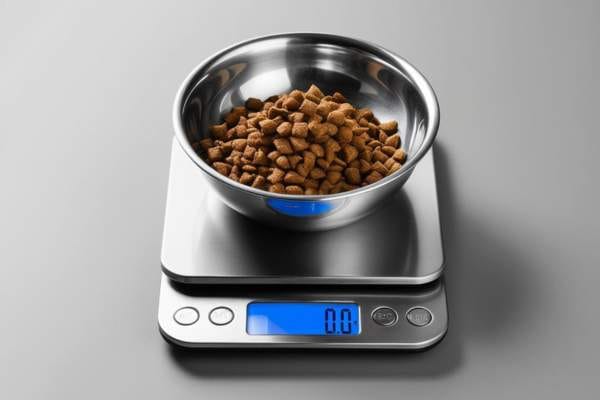
First off, let’s talk about portion control. Most cats don’t know when to stop eating, so it’s on you to help them out. Depending on your cat’s age, weight, and activity level, general guidelines suggest 20 calories per pound of body weight for weight maintenance.
Don’t forget to check the cat’s nutritional labels on the food! But if your cat’s packing on the pounds, it might be time to rethink that serving size—cat obesity prevention is a biggie.
Meal Frequency Recommendations
Now, how often should you serve up those tasty morsels? Generally, adult cats do well with two meals a day—morning and evening, just like us! Kittens? They need more frequent meals, about three to four times daily since they’re little digesting dynamos.
And let’s not forget senior cats; they might need their diet adjusted, like getting more moist food for hydration.
Free Feeding vs. Scheduled Meals
Ah, the age-old debate: free feeding or scheduled meals? Free feeding might sound convenient, but it can lead to overeating and, well, an extra fluffy kitty. I learned that the hard way. Regularly scheduled meals can help control weight and keep your feline’s hunger in check. Plus, it adds some routine to their day—cats love it when you keep things predictable.
Treating and Snacking Guidelines
Finally, those irresistible cat treats! Use them wisely; they should only make up about 10% of your cat’s daily calories. When I give my furball a snack, I make sure it’s a healthy option—think of grain-free treats or something with quality ingredients. And speaking of snacks, avoid feeding table scraps; those human snacks can create a kitty with food intolerance issues.
Keeping your cat’s feeding schedule on point can lead to healthier, happier, and even more playful days. You got this!
Providing proper nutrition is one of the most important things you can do for your cat’s health and happiness. Remember, every cat is unique, so don’t hesitate to consult with your veterinarian about your pet’s specific dietary needs.
By following the guidelines in this guide and paying attention to your cat’s individual requirements, you’ll be well-equipped to make informed decisions about their nutrition. Ready to transform your cat’s diet? Start implementing these nutrition tips today!

